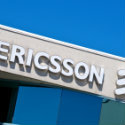
For years, Ericsson has thrived by selling purpose-built radio access network (RAN) equipment, marrying hardware to software in strict monogamy. Now it is consciously decoupling, as a Hollywood celebrity might say.
Bowing to customer demand for more disaggregated products, the Swedish vendor is offering a glimpse of its first-ever "cloud RAN" products. It is a bold step toward the open RAN systems that hold such fascination for a growing number of operators.
What is so different? Operators go to Ericsson partly for the baseband technology that processes radio signals. In a traditional RAN, Ericsson's software straddles its own customized gear. In a virtualized or cloud RAN, that software should, in theory, be comfortable atop any commercial off-the-shelf (COTS) hardware platform. An orgy of hardware competition beckons.
Figure 1:  Ericsson's Per Narvinger says his firm can thrive in a cloud RAN world.
Ericsson's Per Narvinger says his firm can thrive in a cloud RAN world.
None of this sounds ideal for Ericsson, which derives only 21% of its group revenues from software, according to Carl Mellander, its chief financial officer. But it cannot simply ignore customers that have asked for cloud RAN products. Per Narvinger, Ericsson's head of product area networks, downplays the risks.
"If it turns out that we no longer sell the actual hardware for the compute solution, that will be a more standardized x86 solution and hopefully that will also enable a larger market," he tells Light Reading. "Of course, there is a lot of discussion here about what is the impact of going there."
Cautiously does it
Ericsson is treading carefully. The cloud RAN products it announced today will not become available until the fourth quarter of next year. They will include gateways compatible with radio units Ericsson has already deployed, as well as software for both central units and distributed units. Those effectively divvy up the baseband functions for scalability reasons.
When these appear, customers will be able to make use of what Ericsson calls a "system-verified" solution. That means any hardware partner has been pre-approved, says Gabriel Brown, a principal analyst with Heavy Reading. On paper, it is disaggregation. In practice, Ericsson is still the one-stop shop for RAN hardware and software.
Products are also limited to lowband 5G deployments where the demands on the network are not too heavy. That said, Narvinger insists Ericsson will be able to support configurations up to "massive MIMO" levels, when at least 32 transmitters and receivers are used. For more advanced systems, generally intended for busy urban markets, purpose-built products remain superior, he says.
Cloud RAN products compatible with midband technologies are promised, though. A partnership announced last year with Nvidia, which makes high-performance graphical processing units, could help to boost the performance of these systems. "This should not be just a niche product," says Narvinger. "You need to move to more challenging deployments."
How do customers benefit from all this? Certainly not through cost savings, according to Narvinger. "It would be sad if we build something that is only for one purpose and we cannot do it more cost effectively than with general-purpose hardware," he says. "But there could be other benefits – you can potentially have a richer ecosystem around the solution, and you can leverage automation and AI in a larger way."
Want to know more about 5G? Check out our dedicated 5G content channel here on Light Reading.
The enterprise market is a clear target for the new offering. Using COTS equipment for RAN services might allow a company to architect its network in a more scalable manner. While the "system-verified" solution is the initial promise, Ericsson describes this as a "first stage" only. "The main thing about this is that it is a first step in a cloud RAN portfolio," says Brown. "We can expect this to become increasingly disaggregated and open and automated."
The extreme version of this would be a so-called open RAN, where various new interfaces, developed by a group called the O-RAN Alliance, allow operators to mix and match equipment from different suppliers. While Ericsson has recently sounded less dismissive about open RAN – whose pioneers believe they can challenge the Swedish vendor and other traditionalists – it remains cautious.
"I think time will tell," says Narvinger, when asked if Ericsson will provide support for all O-RAN Alliance interfaces. "There are many different interfaces in the O-RAN Alliance, and I think everyone agrees that the first step that needs to happen for this to become viable is that you need to have a fully virtualized compute solution."
Ericsson's update comes several months after big rivals Nokia and Samsung promised their O-RAN-compliant products. If the Swedish firm seems less enthusiastic, and more concerned about the risks, today's cloud RAN announcement is one that not many would have seen coming just a few years ago. That shows how quickly the market is evolving.
Related posts:
— Iain Morris, International Editor, Light Reading
About the Author(s)
You May Also Like











